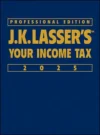Your Employee Benefits: Taxable or Tax Free
Following the Tax Cuts and Jobs Act, there’ve been some changes in the taxation of certain fringe benefits. While most benefits that have been tax free continue as such, you may find some differences in your paycheck. Here is a list tax-free benefits now and what has changed.
Tax-free fringe benefits
Most benefits you receive are tax free. Even if they are reported on your W-2, such as employer-paid medical coverage, it doesn’t change the tax-free nature of the benefit. The following are benefits you can receive that do not increase your taxable compensation:
- Accident and health benefits. Usually there is no cap on the amount of this benefit. However, reimbursements under a Qualified Small Employer Health Reimbursement Arrangement (QSEHRA) are limited in 2018 to $10,250 for family coverage and $5,050 for self-only coverage.
- Achievement awards in tangible personal property (any cash, gift cards, etc. are taxable)
- Adoption assistance up to $13,810 in 2018 (provided your adjusted gross income is below a set limit)
- Athletic facilities
- De minimis (minimal) benefits (e.g., personal use of a company-provided cell phone, occasional company parties)
- Dependent care assistance up to $5,000
- Educational assistance up to $5,250 (unlimited if courses are job-related)
- Employee discounts for the company’s goods or services
- Employee stock options
- Group-term life insurance coverage up to $50,000 (and up to $2,000 for a spouse or dependent)
- Health savings accounts up to $6,900 for family coverage and $3,450 for self-only coverage in 2018
- Lodging and meals at company premises
- No-additional-cost services
- Retirement plan contributions (e.g,. in 2018 up to $55,000 in a SEP)
- Retirement planning services
- Tuition reduction
- Working condition benefits
Changes in fringe benefits
The Tax Cuts and Jobs Act bars an employer from deducting transportation fringe benefits. However, employers may continue to provide free parking, monthly transit passes, and van pooling. If so, you can exclude up to $260 per month in such benefits. However, the transportation fringe benefit for bicycle commuting, which used to be $20 per month, has been suspended for 2018 through 2025. If your employer pays you for this, you’re taxable on it.
Employers may reimburse employees for moving costs. In the past, such reimbursements were deductible by the employer and tax free to employees. For 2018 through 2025, there is no exclusion for this fringe benefit (this does not affect reimbursements received in 2018 for 2017 moving expenses, which are still generally excludable from income). Nonetheless, in this tight job market, employers may still reimburse an employee’s moving costs. The tax cost to an employee for this reimbursement is less than the actual cost of the moving expenses. (Members of the military on active duty who move under a military order and incident to a permanent change of station are still able to exclude qualified moving expense reimbursements.)
Conclusion
Fringe benefits are an important part of a compensation package. Because of low unemployment and an expanding economy, you may see a growing list of fringe benefit offers to attract and retain employees. The tax treatment of a benefit impacts the real value of the benefits to you.



